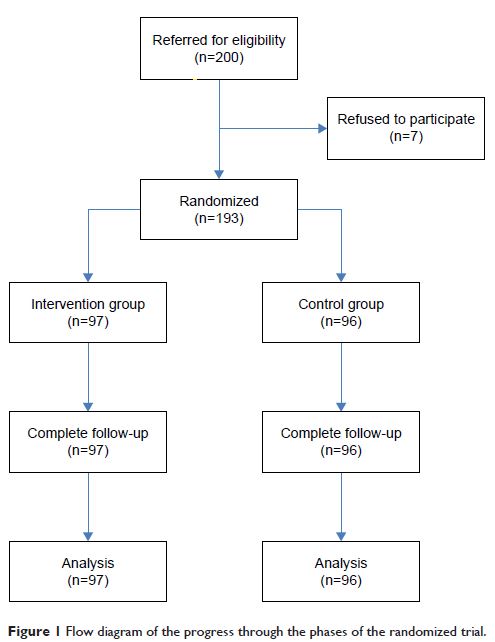9 0 5 7 8
论文已发表
注册即可获取德孚的最新动态
IF 收录期刊
- 2.6 Breast Cancer (Dove Med Press)
- 3.9 Clin Epidemiol
- 3.3 Cancer Manag Res
- 3.9 Infect Drug Resist
- 3.6 Clin Interv Aging
- 4.8 Drug Des Dev Ther
- 2.8 Int J Chronic Obstr
- 8.0 Int J Nanomed
- 2.3 Int J Women's Health
- 3.2 Neuropsych Dis Treat
- 4.0 OncoTargets Ther
- 2.2 Patient Prefer Adher
- 2.8 Ther Clin Risk Manag
- 2.7 J Pain Res
- 3.3 Diabet Metab Synd Ob
- 4.3 Psychol Res Behav Ma
- 3.4 Nat Sci Sleep
- 1.9 Pharmgenomics Pers Med
- 3.5 Risk Manag Healthc Policy
- 4.5 J Inflamm Res
- 2.3 Int J Gen Med
- 4.1 J Hepatocell Carcinoma
- 3.2 J Asthma Allergy
- 2.3 Clin Cosmet Investig Dermatol
- 3.3 J Multidiscip Healthc

基于健康信念模型的教育计划对患者的信念、身体活动和血清尿酸的影响: 一项随机对照试验
Authors Shao C, Wang J, Liu J, Tian F, Li H
Received 24 February 2018
Accepted for publication 13 May 2018
Published 17 July 2018 Volume 2018:12 Pages 1239—1245
DOI https://doi.org/10.2147/PPA.S166523
Checked for plagiarism Yes
Review by Single-blind
Peer reviewers approved by Dr Colin Mak
Peer reviewer comments 2
Editor who approved publication: Dr Naifeng Liu
Objective: We aimed to investigate
the effect of a Health Belief Model (HBM)-based education program on the
perception scores of 5 HBM domains, physical activity, and serum uric acid
(SUA) among asymptomatic hyperuricemia (AHU) patients in a randomized
controlled trial.
Methods: One hundred and ninety-three AHU patients were
involved in this prospective experimental interventional study in Shanghai,
China. Subjects were randomly divided into interventional or control group. The
educational program was designed based on HBM component for the improvement of
knowledge and promotion of lifestyle adherence in terms of low-purine diet and
physical activity among AHU patients. This program included educational
booklets and educational classes. Data were collected from interventional and
control group members both before and after the intervention, using a
questionnaire covering sociodemographic characteristics, HBM variables,
physical activity from the Health-Promoting Lifestyle Profile II, and a check
list for recording the subject’s SUA values, as well as the body mass index,
waist–hip ratio, systolic blood pressure, and diastolic blood pressure.
Results: In the interventional group, the mean scores of
the HBM variables (perceived susceptibility, perceived severity, perceived
benefit, perceived barriers, and self-efficacy), SUA values, physical activity,
body mass index, and waist–hip ratio were improved significantly after the
intervention (p <0.05), whereas no significant
differences were detected in the control group between baseline and follow-up
measures.
Conclusion: This study showed the importance of the
educational program based on the HBM in improving the model constructs and
physical activity, as well as in decreasing the SUA values in AHU patients.
Keywords: Health Belief
Model, asymptomatic hyperuricemia, education, adherence
